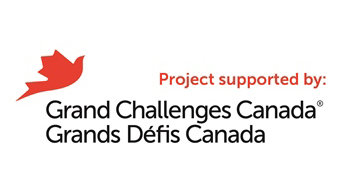2.6 – What are the precautions that all rehabilitation providers should take regarding HIV and other related co-infections?
When working with people living with HIV, standard precautions (often called universal precautions) should be used.
- Standard precautions require frequent hand washing between all client interactions.
- Standard precautions also include using a barrier device (e.g. gloves) whenever contact with blood or body fluids is anticipated.
- When handling clients whose skin is intact, gloves are not needed. However, if there are open lesions or breaks in the skin and/or contact with bodily fluids is likely, gloves and long-sleeved gowns are appropriate.
- Use needles and other sharps safely, and dispose of them safely in biological waste (without any attempt to recap them)
- For more detailed information see the World Health Organization’s standard precautions in health care http://www.who.int/csr/resources/publications/EPR_AM2_E7.pdf
These are the same precautions that should be used with all patients, regardless of whether or not they are HIV-positive. This is because HIV is a blood borne disease.
Table 2.6: Which body fluids are infectious for HIV?
| Body Fluids Potentially Infectious for HIV | Body Fluids Not Infectious for HIV |
|---|---|
|
|
While universal precautions are appropriate for protecting oneself from HIV, a person living with HIV may also have other diseases that require a higher level of precaution, such as:
- Pulmonary TB – precautions would include wearing an appropriate mask
- Hepatitis B – precautions would include vaccination
Health care workers in developing countries, including those in Sub-Saharan Africa, are at increased risk of occupational exposure to blood borne diseases for a number of reasons, which make adherence to universal precautions even more important. Reasons for increased risk of occupational exposure include:26
- Increased disease prevalence in the population
- Greater disease severity of patients seeking care
- Higher number of needle stick injuries
- Culture of using injections versus other methods
- Use of hazardous equipment and procedures (e.g. glass capillary tubes, non-retracting finger stick lancets)
- Number of informal workers
- Lack of vaccination coverage against hepatitis B
- Lack of availability of post-exposure prophylaxis (PEP)
- Lack of adherence to standard precautions
Post-exposure prophylaxis (PEP)
In the case of a significant occupational exposure (e.g., exposure to blood or bloody body fluids through a hollow bore needle which has been in an artery or vein of a person known to be infected with HIV), individuals should immediately wash the area with warm soapy water and directly seek medical care (e.g., at an emergency department).
Significant exposure may require post-exposure prophylaxis (PEP), which is a form of antiretroviral treatment that is most effective when taken within 72 hours of exposure. Although reasonably successful, PEP is not a guaranteed prophylaxis and should only be used in extreme cases.23
22Lee R. Occupational transmission of bloodborne diseases to healthcare workers in developing countries: meeting the challenges. Journal of Hospital Infection. 2009 Aug;72(4):285-291.
23Centers for Disease Control (CDC). Antiretroviral post-exposure prophylaxis after sexual, injection-drug use, or other nonoccupational exposure to HIV in the United States. MMWR. 2005 Jan 21;54(RR02):1-20. http://www.cdc.gov/mmwr/preview/mmwrhtml/rr5402a1.htm.

 Previous Page
Previous Page




